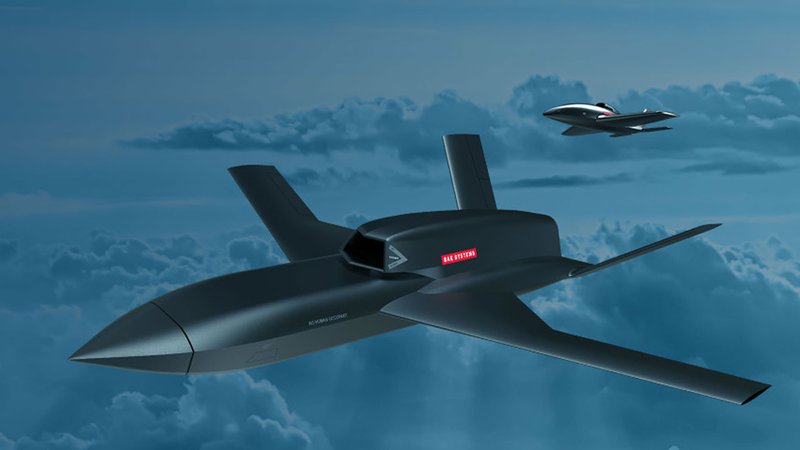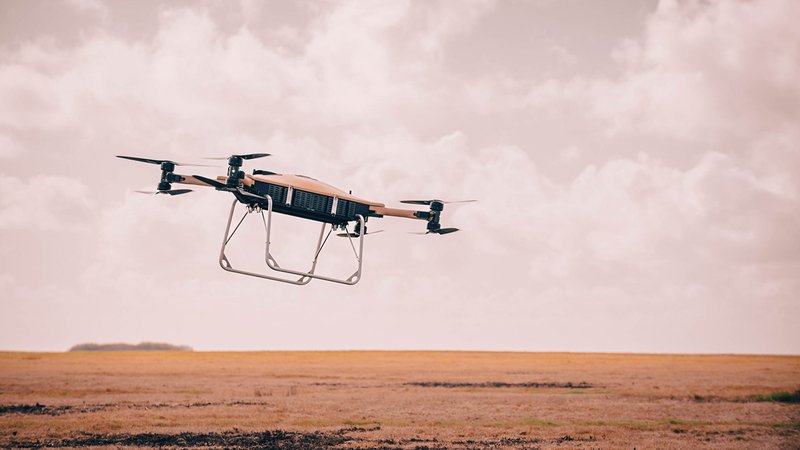Joining the dots – making sense of BAE Systems’ acquisition strategy
Following a recent raft of takeovers in the uncrewed systems and C4ISR space, has BAE Systems emerged with the right air domain portfolio at the right time?
BAE Systems, along with several other companies, presented a new UCAV or loyal wingman ‘Concept 2’ model at this month’s World Defense Show near Riyadh. This featured a diamond wing and different V-tail configuration to the mock-up seen in 2022 at the RIAT event... Continues below
Newsletter Sponsor:

Above: While artists’ impressions of UCAVs may hit the headlines, BAE Systems is (relatively) quietly building up a portfolio of business units that may play a not insignificant role in future programmes. (Image: BAE Systems)
The marketing stressed capability and combat mass rather than attritability and low cost, although the overlap between these points is considerable. This product has so far been developed with internal funding and there is no apparent contract for the aircraft itself.
However, such a capability is envisaged for the (so-far) tri-national Global Combat Aircraft Programme and hence it is likely that an increased budget from the wider endeavour will at some point arrive in the department responsible for ‘Concept 2’.
Beyond such headline-grabbing advanced uncrewed programmes (significantly not including a prime offering for the US Collaborative Combat Aircraft programme), the company has also embarked upon a series of acquisitions that seem intended to widen its capability across the overlapping UAS-space-C4ISTAR-testing landscape.

While at first this might seem like a disjointed combination of subjects, they mirror – not without coincidence – the recent priority shift that supposedly triggered the sudden cancellation of the US Army’s Future Attack Reconnaissance Aircraft.
This programme’s demise was supposedly premised on the view that the crewed helicopter attack/reconnaissance role was no longer viable, and that the capability would instead be delivered by a variety of land assets, UAS and space-based sensors, tied into advanced communication networks.
While BAE has strong pedigree in these areas, some are better off than others. They are also not evenly spread geographically and hence may not fulfil local investment or workshare requirements.
Where to begin unpicking these threads? In 2021-22 the US BAE Systems Inc entity completed procurement of Raytheon’s airborne tactical radio and military GPS businesses. Clearly these technologies have a variety of use cases and are applicable to many platforms and C4I networks.
Nevertheless, in the pursuit of overarching comms across the mixed environment of evolving battlefield ISTAR, they are extremely useful acquisitions and benefit the company’s generally strong work in the area.
Radio Frequency Systems (Australia) is another useful and, from a capability perspective, highly logical acquisition. The company (a subsidiary of the German entity of the same name) managed the relatively famous Jindalee radar/test range and participated in the Redfin secure communications programme.
Given BAE’s solid presence Down Under, this is both a confirmation of company activity in a lucrative home market as well as an extension of resources in this capability area. With AUKUS developments proceeding, albeit in somewhat nebulous fashion, improved presence in high-end radar, communications and testing is of great utility.
The recent purchases of Prismatic and Malloy Aeronautics form a more obvious venture. Malloy is developing medium-sized, electric, heavy-lift UAS which could also be used for persistent ISR in traditional helicopter mode (as well as acknowledging BAE’s commitment to net zero). From the FARA cancellation perspective this is a useful avenue to pursue given that other operators will undoubtedly be examining their own plans for future ISR vertical lift.

Above: While currently targeted at heavy-lift logistics applications, Malloy’s electric UAS technology could also be useful in ISR roles. (Photo: Malloy Aeronautics)
Prismatic adds another very useful piece to the board. One of its major areas of work under BAE will undoubtedly be the PHASA-35 High Altitude Pseudo Satellite (HAPS), a solar electric platform capable of operating at over 60,000ft.
Though the current model doubtless has a limited payload (MTOW of 150kg), it offers extremely long endurance as a communications node for collation and distribution of ISR data from third parties. Not needing a specialist launch system, it is also less costly and hence more attritable. Developed versions will likely see carriage of sensors that enable an organic reconnaissance capability.
Final item on this list is the space division of Ball Aerospace, negotiated for in late 2023 and approved this month. The company has expertise in orbital surveillance for civil and military uses, including work on the Space Based Surveillance System intended to offer a persistent means for observing activities of concern to the US government.
The new acquisition will fall under BAE’s extant Space & Mission Systems division, which together with the Prismatic platforms will provide a significant entry to the near earth orbit sector of ISR.
Clearly, little of this was directly envisaged prior to the Ukraine conflict and certainly not linked with the surprise cancellation of FARA – there is no way in which the sudden shift in US strategy could have been forecast and hence result in such a convenient accumulation of capability. Indeed, BAE is far from alone in pursuing purchases in these areas.
However, taken together, these additions to established divisions and products over the last three years are potentially of extreme value in addressing the contemporary defence and security customer base.
The ability to manage a variety of assets from ground level to extra-atmospheric platforms, potentially bypassing traditional stages such as manned helicopters, in a dynamic and malleable manner, is likely only to become more important. It will be interesting to see how these new business units are supplemented by the next round of acquisitions.
Also in this month's newsletter: Hot topics – the air warfare themes that are making headlines in 2024











